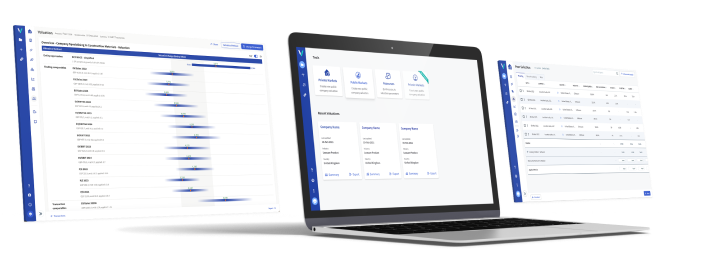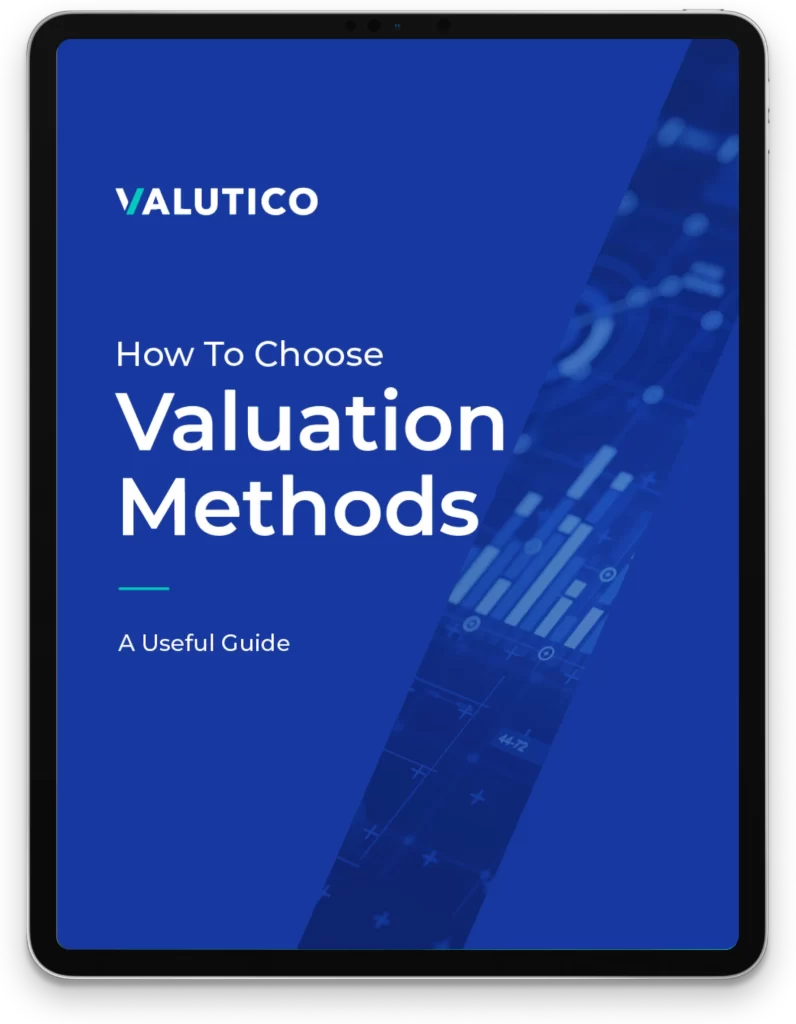
In this article, we’ll cover the basics of what a discount rate is and where it’s used. More importantly, we’ll dig deeper into how discount rates can influence investment choices and how they’re used to figure out a company’s worth.
What is a discount rate? The “discount rate” does two main things. For central banks like the Federal Reserve, it helps control the economy. They set this rate to affect how much money moves through banks and influences short-term interest rates. On the other side, investors use a discount rate to figure out how much future cash is worth today. This considers the idea that a dollar today is more valuable than a dollar tomorrow, plus the risk of the investment. If there’s more risk, they use a higher discount rate. This helps investors compare options and pick the ones that give the best value today based on what they expect to get back in the future.
Key takeaways:
- The discount rate is primarily used by central banks to manage the economy and investors to calculate the present value of future cash flows from an investment. In this article, we cover the latter.
- It’s vital to determine the correct discount rate for company valuation, factoring in the time value of money.
- The concept of time value of money – a dollar today is worth more than a dollar tomorrow – is fundamental to the discount rate.
- The discount rate effectively encapsulates the risk associated with an investment; riskier investments attract a higher discount rate.
- Different types of discount rates such as risk-free rate, cost of equity, or cost of debt, are used contextually in financial analysis.
- The Discounted Cash Flow (DCF) method uses the discount rate to consider all future cash flows of a business when calculating its current value.
- In DCF analysis, the Weighted Average Cost of Capital (WACC), representing the average return required by all stakeholders, is commonly used as the discount rate.
- The discount rate must be carefully chosen to reflect unique company risks and characteristics, and also changes in economic conditions.
- Correct application and understanding of the discount rate are critical for an accurate financial analysis, aiding informed investment decisions.
What do we cover?
We are going to focus on how discount rates are used in the context of investment, rather than in the context of central banks.
What is a discount rate? Short summary
Central Bank Discount Rate: Central banks, like the Federal Reserve, use the discount rate as a tool to manage the economy. By adjusting this rate, central banks influence the flow of money through banks and impact short-term interest rates, playing a key role in economic regulation. This is different from the discount rate used in investment.
Investment Discount Rate: In investment analysis, the discount rate is employed to calculate the present value of future cash flows. Investors use this rate to account for the time value of money and the risk associated with an investment. The higher the risk, the higher the discount rate, helping investors make informed decisions about potential returns.
Discount rate explained using a lemonade stand
Imagine you’re thinking of buying a lemonade stand that makes $1,000 every year. But what if you could earn more money if you invested that same amount elsewhere? The discount rate helps you decide if the lemonade stand is a good investment by considering the potential return on other opportunities and the risks involved.
By using discount rates, we can make smarter decisions about which companies to invest in and understand their true value in today’s dollars.
How is the discount rate related to the rate of return?
A discount rate, in the context of investment, is the rate of return used to determine the present value of future cash flows from the investment. In other words, it represents the time value of money and discounts the value of the future cash flows to their equivalent value in today’s dollars.
Determining the appropriate discount rate is a critical aspect of company valuation, particularly in discounted cash flow (DCF) analysis. By using the discount rate, experts can figure out how much the company is truly worth in today’s terms, helping buyers and sellers make fair decisions.
Why is the time value of money important?
The concept of discount rate is rooted in the time value of money, which asserts that a certain amount of money today is worth more than the same amount in the future. This is because money has the potential to earn returns or interest over time. As a result, the value of future returns is discounted to its present value today using an appropriate discount rate.
An example of applying a discount rate – Return versus risk
The discount rate reflects the required rate of return that compensates investors for the time value of money and the risk associated with an investment. So, when experts evaluate a company, they consider its risk level, and this directly affects the discount rate they use. The higher the risk, the higher the discount rate, and the lower the company’s valuation.
Assume Company A and Company B, both are expected to make $1,00,000 every year. However, Company A operates in a stable industry with steady profits, while Company B is in a riskier, unpredictable industry.
Because Company B involves more risk, experts might use a higher discount rate of 12% versus 8% for Company A. Using these rates, the present value of future earnings of Company A would be higher than that of Company B, even though they are expected to make the same amount each year.
Types of discount rates
There are various types of discount rates used in valuation and investment analysis, each serving a specific purpose. Here are some common types:
Risk-Free Rate:
The risk-free rate is the rate of return on an investment with nearly no risk of financial loss or default. In practice, government bonds, particularly those issued by financially stable governments, are often considered risk-free assets. This rate often serves as the foundation for determining the required rate of return in financial models.
Cost of Equity:
The cost of equity represents the return required by equity investors to compensate them for the risk of owning a company’s shares. It is often calculated using the Capital Asset Pricing Model (discussed in the following sections) or other equity pricing models.
Cost of Debt:
The cost of debt is the return required by debt holders, such as bondholders or lenders, to compensate them for the risk associated with lending money to a company. It is usually expressed as the interest rate on debt.
Weighted Average Cost of Capital (WACC):
WACC is the average rate of return a company is expected to provide to all its investors, including equity and debt holders. It is calculated by weighting the cost of equity and cost of debt based on their proportions in the capital structure.
Internal Rate of Return (IRR):
IRR represents the discount rate at which the net present value (NPV) of all cash flows from the investment becomes zero. In other words, it is the rate of return that makes the present value of future cash inflows equal to the present value of cash outflows.
Why is the discount rate important in valuations?
Obtaining a reasonable estimate of the discount rate is crucial, as being excessively optimistic or conservative in its inputs can result in an impractical valuation. To refine the selection of the discount rate, it’s important to draw on inputs from credible sources regarding economic, industry and company specific risk factors.
Conducting sensitivity analysis on the present value of cash flows by adjusting key inputs in the discount rate calculation is recommended. This approach aids in evaluating the effects of changes in assumptions and offers a reasonable range of value for a business
Discount Rate for a DCF
What is the discounted cash flow method?
The discounted cash flow (DCF) method is one of the most commonly used methods for calculating a company’s value. It’s also used for calculating a company’s share price, the value of investments, projects, and for budgeting. The DCF method takes the value of the company to be equal to all future cash flows of that business, discounted to a present value by using an appropriate discount rate. This is because of the time value of money principle, whereby future money is worth less than money today. That’s why it’s called a ‘discounted’ cash flow.
DCF = discounted cash flow
CF_i = cash flow period i
r = discount rate
{n} = time in years before the future cash flow occurs
Find a more detailed explanation of the Discounted Cash Flow Method here.
Discount rate for DCF
In Discounted Cash Flow (DCF) analysis, the discount rate used is typically the weighted average cost of capital (WACC). The WACC represents the overall cost of financing a company’s operations and is used to discount future cash flows to their present value.
The WACC is used in DCF because it represents the average rate of return required by all the stakeholders (both equity and debt holders) to support the company’s operations. The WACC considers the cost of equity, the cost of debt, and the proportion of equity and debt in the company’s capital structure. The formula for WACC is:
WACC = (E/V x Re) + ((D/V x Rd) x (1-T))
E = market value of equity
D = market value of debt
V = total market value of the firm’s equity and debt
Re = cost of equity
Rd = cost of debt
T = tax rate
Check out more insights on the concept of WACC here.
Cost of Debt (Rd):
The cost of debt refers to the effective interest rate that a company pays on its debt, such as bonds, loans, or other forms of borrowing. It represents the cost a company incurs to access funds through debt financing. Cost of debt generally incorporates a credit spread above the risk free rate to compensate investors for the risk of default.
Cost of Equity (Re):
The cost of equity represents the return that investors expect to receive for holding shares in a company. It is the cost a company incurs for using equity capital to finance its operations and growth. The Capital Asset Pricing Model (CAPM) is a financial model used to determine the expected return on an investment, especially in the context of equities.
Capital Asset Pricing Model (CAPM):
According to CAPM, the expected return on a stock has two main components: the risk-free rate and a risk premium. The risk-free rate represents the return an investor can get without taking on any risk, typically derived from government bonds.
Risk Premium:
The risk premium reflects the additional return investors demand for taking on the risk of investing in the overall market. It is often referred to as the “market risk premium.” In other words, it quantifies the compensation investors require for exposing themselves to the inherent risks of the broader market.
Beta as a Measure of Risk:
CAPM introduces the concept of beta, which measures the stock’s sensitivity to market movements. A beta of 1 indicates that the stock moves in line with the market, a beta greater than 1 suggests higher volatility, and a beta less than 1 implies lower volatility.
Beta’s Role in Expected Return:
The beta is multiplied by the market risk premium to calculate the additional return required for the stock’s specific risk. If a stock has a higher beta, it is expected to provide a higher return to compensate for the increased risk.
Other Risk Premia:
In addition to market risk premium, the cost of equity may incorporate premium for various risk factors affecting the subject company such as the following:
Country Risk Premium:
Country risk premium reflects the additional return demanded by investors for investing in assets based in a particular country. It incorporates various factors, including economic stability, regulatory environment, and geopolitical considerations.
Size Premium:
In the context of investing in stocks, the size premium refers to the additional return that investors might expect for holding small-cap stocks compared to large-cap stocks. Small-cap stocks are often considered riskier and may command a size premium. In the context of valuation of a private company, this premium can be applied as the market risk premium considers beta of public companies which are larger and more established versus the subject company.
Company Specific Risk Premium:
Company-specific risks can arise from various factors, including management quality, operational efficiency, competitive positioning, regulatory issues, and other idiosyncratic factors that impact the company’s performance.
CAPM Equation
An example of cost of equity calculated using various risk factors under CAPM is as follows:
Cost of Equity = Risk Free Rate + (Beta x Market Risk Premium) + Country Risk Premium + Size Premium + Company Specific Risk Premium + Other Risk Premium
Pitfalls to Avoid: Common Misconceptions about Discount Rates in Valuation
When dealing with discount rates in company valuation, avoid using a “one-size-fits-all” approach and applying the same discount rate to all companies, regardless of their unique characteristics and risks.
Discount rates are not static. The risk factors that are considered while estimating a discount rate can change over time. For example, It’s essential to avoid overlooking the impact of changing economic conditions on discount rates. Economic changes can influence the rate of return investors expect, affecting how they value a company.



